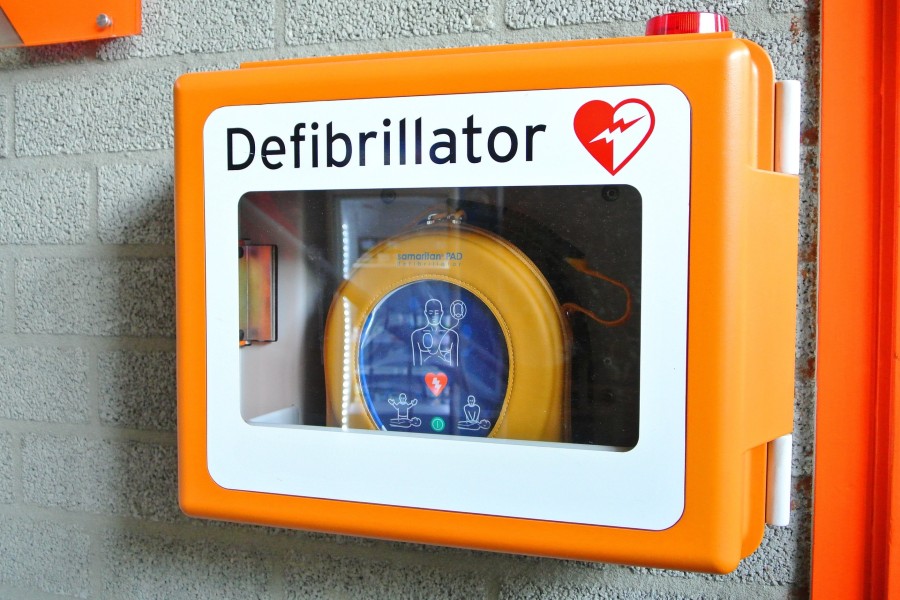Sudden cardiac arrest is a serious issue in Australia and is actually one of the leading causes of death. It’s estimated that 22,000 to 33,000 people lose their lives to sudden cardiac arrest every year. The good news is that immediate bystander CPR and defibrillation within the first few minutes, could save a person’s life and prevent any long-term neurological damage.
So, is a gym or health facility required to have an Automated External Defibrillator (AED) on-site in Australia? In this article, we’ll discuss the current legal requirements for gyms and fitness clubs surrounding AED’s well as the practicalities of having a defibrillator installed.
Sudden cardiac arrest doesn’t discriminate and can affect anyone, young or old, healthy or not. It can happen in an instant and without warning. Gyms and fitness clubs are where people go who are trying to actively improve their health. Unfortunately, the increased load that can be experienced during exercise can sometimes be the catalyst for sudden cardiac arrest. Many people have
undiagnosed heart conditions that exist as a silent ticking time bomb, and many others join a gym
following a cardiac event to take proactive measures in improving their lifestyle habits.
Is it a legal requirement for gyms to have a defibrillator in Australia?
At the time of writing this article, there is no Australia-wide mandate around AED’s the workplace or in public facilities such as gyms. However, South Australia has introduced a bill that would require certain types of buildings (including sporting facilities) to have AEDs installed, maintained, signed, and registered. In most cases throughout
Australia, it’s up to each individual business to evaluate its own needs and decide whether to invest
in an AED, although the Australian Resuscitation Council recommends having a workplace AED as “good practice”.

Dr Betul Sekendiz is an internationally recognised thought leader in the health and fitness industry
and provides independent expert advice to AusActive in the development and
review of standards, codes, guidance materials, and quality assurance schemes. Dr Sekendiz obtained her PhD from Bond University, specialising in risk management and minimisation of legal
liability in the health and fitness industry. She now operates Fitness Industry Risk Management
Consulting (FIRMC®), which provides approachable consultancy services to health and fitness businesses to help them develop risk management programs that can meet their unique
organisational goals and needs.
Dr Sekendiz conducted an Australian-first research study, which was published in Emergency Medicine Australasia in 2021. Using de-identified electronic data obtained from the Queensland Ambulance Services, the research study analysed an 8-year period from 2007 to 2015. The results showed that out of all the non-traumatic, out-of-hospital sudden cardiac events in public places,
approximately one out of every ten occurred at exercise and sports facilities.
Legalities aside, should you have an AED installed in your gym?
For reasons already mentioned above, gyms and health clubs can be prime environments for sudden
cardiac arrest to occur. Purchasing and installing an AED for your facility is a genuine way to care for and potentially save the lives of your members and your staff. It’s especially important if you are located in a more remote location, where professional medical assistance could take longer to arrive. Even in high-density suburbs, where an ambulance may arrive quickly, it’s worth pointing out that in the event of a sudden cardiac arrest, the patient’s survivability can decrease by as much as 10
percent for every minute that passes without defibrillation.
Other benefits to purchasing an AED for your business:
Formal training in AED use isn’t necessary as they are purposefully designed in a way to walk the
operator through each step. In an emergency, however, it’s ideal that the first responder feels as
capable as possible, so it’s wise to have your staff familiarised with the use of an AED.
Training sessions such as this can be a good way to build staff rapport, with shared experiences often
a useful ice-breaker.
The addition of an AED to your facility can be a great member engagement tool. Find out which of
your members are already trained in using an AED – it can be a handy conversation starter to find
out more about their lives and experience. You may even introduce a system where members who
are trained in AED use can wear a wristband to easily identify them in an emergency.
Your AED is an asset – make sure you let the community know. It could provide reassurance to
someone who has hesitated about joining a gym and sends a message about your club’s values.

Things to consider when purchasing an AED for your gym or facility:
To maximise the effectiveness of having a portable AED in the workplace, there are a few key things to keep in mind:
Location:
When installing an AED, choose a visible and accessible location and install clear signage that complies with legislative requirements. It should be in a central location within the business, near common areas, and not locked away in a cabinet or room.
Price:
Many larger-sized Aussie businesses have already installed AED’s in anticipation of it becoming
mandated at some point in the future. For smaller operators, the cost of an AED can be a barrier, particularly in today’s uncertain economic situation. There are a wide range of AED’s available and they do vary in price considerably. Do your research, because it’s possible to purchase a quality portable defibrillator for less than a thousand dollars – an insignificant amount when you think it might save the life of one of your members or colleagues.
Training:
Include procedures around the use of an AED in your workplace emergency response plan.
Ensure that all employees are aware of the defibrillator’s existence and how to use it by providing an induction. While formal training is not required to operate an AED, some basic
instruction and regular practice drills will help everyone feel more confident in the event of a sudden cardiac arrest emergency.
Maintenance:
To ensure the defibrillator is in proper working order, be sure to perform routine
maintenance as required. Additionally, it should be replaced every 8 years or more often according
to the manufacturer’s recommendations.
If you are considering installing an AED or you need assistance putting together risk assessments
including emergency response plans and procedures, you can contact FIRMC® for more information.

Using the Evolt 360 Body Scanner to Get Members Through The Door
Are you looking for ways to get members to reconnect with you and motivate them to get back into their workout routines? The cost of living crisis is being felt across Australia, and gyms need to offer increased value to members for those membership fees to be justified in the next round of household spending

8 Productivity Tips For Procrastinators
As a solo business operator, procrastination can be extremely detrimental. We recently asked a sample of business owners to share their tips to keep it at bay. Here are the top things we identified that help them to be freakishly productive. Enjoy these 8 productivity tips for procrastinators: Productivity tip: Keep the home office tidy

Solutions For Filling Up Empty Cycle Studios
With the home gym equipment market offering increasingly great value, and the humble stationary bike now more interactive and connected than ever before, you may be noticing less bums on seats in your cycle studio. A cardio theatre is a significant investment, both with the purchase and maintenance of exercise equipment and also due to

MZ-Open: Integrating MyZone With Your Existing Smart Watch
From 13th March 2024, Myzone will be switching on its newest feature, MZ-Open – an access function, which enables members to integrate their existing smart watch with the Myzone ecosystem at their gym. This function means gym owners can create more community within their membership, offering more incentives for their members to stick around, get

Wello Works: Bringing Balance to Coworking Spaces Through Wellness
The popularity of coworking spaces has been trending upward for several years now. The same people who embraced the flexibility of working remotely in a post-pandemic world, are increasingly craving the social and productivity benefits that come with separating the work environment from the home. Fitness and wellness entrepreneur, Tony de Leede, has created a

Picking the Perfect Playlist For Your Gym: Here’s What the Research Says
People like to feel pumped up and energised when working out. How do you motivate yourself and get the results you want? One way is to crank up the music and jam to your favourite songs. Did you know there’s actually some research to support why picking the perfect playlist for your gym is important?

